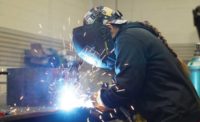Two years ago, the Building Commissioning Association (BCA) released findings from a survey that revealed nearly two-thirds of building professionals believe that ducts in buildings have significant leakage. Sixty-eight percent of respondents reported that leakage rates of 15 percent or more are common. That’s despite the fact that building regulations and industry guidelines typically call for leakage rates that are substantially below that level.
Even though the overwhelming evidence points to duct leakage as a main culprit behind a slew of building performance problems, little attention has been paid to addressing the situation … until now. Over the coming months, building professionals and other contractors will be witness to a number of updates to regulatory standards and industry guidelines that directly impact duct performance.
Thanks to a variety of code changes and other regulatory updates that focus on improving total HVAC system performance, 2018 is on board to going down in building history as the Year of The Duct.
“When it comes to ductwork, there has been a long-standing chasm between best practices and cost-cutting measures,” said Ken Mueller, duct specialist, DeBra-Kuempel, Cincinnati. “I’ve found that unless there is a specific performance goal being targeted or mandatory proof of compliance, attention to proper duct functioning is often lax.”
And it’s this lax attitude toward effective duct performance that’s behind many of the regulatory updates that have been introduced or are on the way later this year.
“This should not be a surprise to anyone following industry trends,” said Neal Walsh, senior vice president of Aeroseal LLC. “Over the past couple of years, the DOE [Department of Energy] and others have been making tweaks to long-standing programs that foreshadowed this invigorated attention to duct sealing. Now, thanks to pressure from the marketplace and technological innovations that make tighter regulations possible, regulatory groups are ready to act.”
After working their way through committees and approval processes that include considerable feedback from the contractor community, a score of new updates focused on tightening duct standards and more rigorous duct testing has arrived.
ASHRAE HANDBOOK Fundamentals
The most recent updates to the ASHRAE Handbook include expanded parameters for duct testing. According to this widely adopted manual, industry standard practice now dictates that the supply air, return air, and exhaust air systems be tested for leakage during construction and then again after the duct system is fully assembled and installed.
The new guidelines recommend that 25 percent of the system be tested during construction and another 25 percent if any of the initial sections fail. It then dictates that 100 percent of the system be tested if the system fails to meet acceptable leakage rates after the second testing. According to the handbook, leakage tests should be conducted by an independent contractor.
Additionally, the handbook is now recommending a maximum fractional leakage for fan systems of 5 percent. The “system” includes ductwork upstream and downstream of the fan as well as components mounted to that ductwork where leaks can occur (dampers, VAV boxes, etc.). Assuming an average air device leakage rate of 2 percent leaves contractors with very little room for duct leakage (2 or 3 percent), duct sealing becomes even more critical to meeting the requirement.
ASHRAE 189.1
The latest version of ASHRAE 189.1, the Standard for the Design of High-Performance Green Buildings, is slated for official release later this year. Updates to this standard will expand duct testing requirements to include, for the first time, medium-pressure ducts as well as high-pressure ducts.
“I spearheaded this update to reflect the expanded use of lower-pressure ductwork and the industry’s growing understanding of the performance hit that duct leakage — even in low-pressure ducts — can have on energy usage, indoor air quality, and other building performance issues,” said Jeff Boldt, a voting member of the ASHRAE 189.1 committee and director of engineering at IMEG Corp.
“The industry has resisted testing because of the additional costs involved,” said Bob Reid, former chairman of ASHRAE technical committee 5.2 and currently with Spiral Pipe of Texas. “But new options now make sealing existing ductwork cost effective, so, in reality, building owners can either make a relatively small payment up front to ensure their ducts are operating properly, or they can continue to pay higher operating costs throughout the life of the building.”
2018 UMC
Developed by the International Association of Plumbing and Mechanical Officials (IAPMO), the Uniform Mechanical Code (UMC) is an American National Standard used to govern the installation, inspection, and maintenance of HVAC systems. The recently updated code includes, for the first time, guidelines regarding the testing of ductwork that embraces a stepped approach, with an initial testing of 10 percent of the ductwork. If this sample fails to pass, it’s recommended that subsequent testing include an increasingly larger testing sample.
IECC 2018
The latest version of this commonly used building guideline took effect Jan. 1. Among changes in the code is a provision that requires building owners to provide all HVAC equipment and testing data needed to determine proper installation. This is intended to increase post-installation testing and drive processes that ensure effective duct sealing has been accomplished.
In addition to these updates, the building industry is poised for other revisions affecting the performance and testing of duct systems.
SMACNA GUIDE TO DUCT CONSTRUCTION
The fourth version of the Sheet Metal and Air Conditioning Contractors’ National Association (SMACNA) HVAC Duct Construction Standards manual reflects industry innovations that affect the construction, installation, and repair of HVAC ductwork — both metal and flexible ducts.
ASHRAE SPC215
The new industry guideline, Method of Test to Determine Leakage of Operating HVAC Air Distribution Systems, is expected to recommend specific methods for duct testing.
CALIFORNIA TITLE 24
Often used as the blueprint for other state building code standards, the latest version of California’s Title 24 building standards code is expected to include new emphasis on reducing duct leakage and the role that effective duct performance plays in the energy efficiency of today’s commercial buildings. With the latest updates to this standard currently in the review and comments stage, these changes are expected to go into effect in early 2020.
TAKING NOTICE
There’s no longer an argument. The studies have been done, and the data is indisputable: Proper duct installation and maintenance is critical to overall building performance. Still, the latest reports highlight the fact that a large percentage of residential and commercial buildings across the U.S. continue to be constructed and renovated with little to no attention being paid to proper duct functioning.
“Building engineers and mechanical contractors should take note,” said Walsh. “Business as usual will be changing for those concerned with meeting code and following accepted guidelines. This is the year that duct design and installation will face an increasing amount of scrutiny. Now that there are finally practical, cost-effective ways to fix this critical issue, industry standards’ bodies are taking notice. As a result, 2018 will certainly prove to be the Year of The Duct.”
Publication date: 8/13/2018
Want more HVAC industry news and information? Join The NEWS on Facebook, Twitter, and LinkedIn today!










